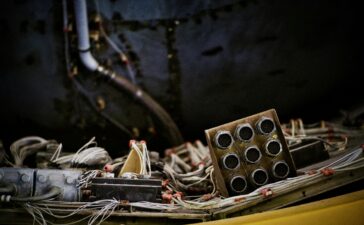On engines with forced induction either a turbocharger or a superchargersystems, an intercooler is a mechanical device used to cool the intake air.
The intercooler’s role is to cool the air before it enters the engine after it has been compressed by the turbo or supercharger.Before the air enters the engine’s cylinders, turbochargers compress the air to make it denser. More air being forced into each cylinder allows the engine to burn proportionally more fuel, which results in each explosion producing more power.
The heat produced by this compression raises the temperature of the air entering the engine. Unfortunately, the amount of oxygen in each cylinder decreases as air gets hotter and less dense, which has an effect on performance.By chilling the compressed air to give the engine more oxygen and enhance combustion in each cylinder, the intercooler tries to reverse this process. Additionally, by ensuring that the air to fuel ratio in each cylinder is kept at a safe level, air temperature regulation improves the engine’s dependability.Its important to have a good quality intercooler, for example; purchased from hdi performance parts.

There are two primary intercooler types, and they each function differently:
Air-to-Air: The first option is an air-to-air intercooler, which circulates compressed air past cooling fins through a web of tiny tubes. These cooling fins absorb heat from the hot compressed air and transmit it to them; these cooling fins are then kept cold by the swift airflow from the outside of the driving vehicle.The engine’s intake manifold receives the cooled compressed air after it has passed through the intercooler and into the cylinders. The majority of turbocharged vehicles use air-to-air intercoolers, which are the most widely used option because to their simplicity, light weight, and low price.
Air-to-water: Air-to-water intercoolers use water, as the name implies, to reduce the temperature of compressed air. Heat is removed from the air as it passes through the device using cool water that is pumped through it. When the water is cool, it is circulated through a cooling circuit or radiator as it heats up before returning to the intercooler.Because water transmits heat better than air, it is suited for a wider range of temperatures and air-to-water intercoolers often tend to be smaller than air-to-air intercoolers, making them ideal for engines with limited space.However, air-to-water intercoolers are less common on vehicle engines due to their greater complexity, expense, and weight.

Although air-to-air intercoolers can theoretically be put anywhere between the turbo and the engine, they are typically installed towards the front of the car, behind the grille, because there is greater airflow there.
The engine layout of some vehicles prevents this, so the intercooler is mounted on top of the engine instead. However, airflow is typically reduced in this location, and the intercooler may be adversely affected by heat from the engine itself. To increase airflow under these circumstances, extra air ducts or scoops in the bonnet are typically fitted.





